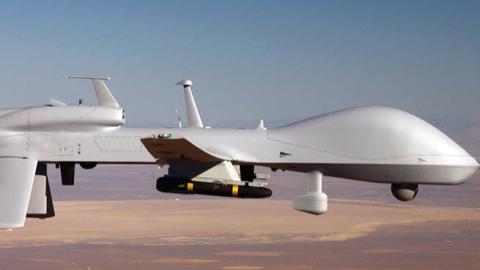After more than four months of beating back Russia’s unprovoked invasion, Ukraine is now buckling under the weight of Moscow’s concentrated assault in the nation’s east. Backed by rocket and artillery barrages more than 10 times what the beleaguered defenders can muster, Russian troops are expanding their gains in the Donbas, threatening to create a “land bridge” from Russia to the Crimean peninsula. More concerning, Russia’s blockade of Odessa has precipitated a worldwide grain shortage, and Ukraine’s surviving navy is no match for the two dozen ships and five submarines of Russia’s Black Sea Fleet.
The waterfall of Western aid that helped Ukraine defeat Russia’s initial offensive against Kyiv and the country’s north has slowed to a trickle. Ukraine has received only a handful of NATO howitzers, anti-ship missiles and rocket launchers and is running low on all types of ammunition. Facing a global food crisis, U.S. and allied leaders are suggesting that Ukrainian President Volodymyr Zelensky negotiate a settlement with Russian President Vladimir Putin.
The problem with negotiating an end to the blockade or invasion is that Putin would continue to hold Ukraine, and the world, hostage. A month or a year from now, Putin may decide the terms of the agreement are unsatisfactory and again cut Ukraine off from the Black Sea or restart artillery bombardment of towns along the front lines.
Ukraine’s only path to security is regaining the ability to counter Russia’s attritionary tactics on the ground and to threaten the Black Sea fleet on the water. Ukraine could then negotiate from a position of strength and be prepared to enforce agreements it reaches with Russia.
The West cannot ship enough artillery pieces and shells fast enough for Ukraine to win a salvo competition against Russian troops fighting in their own backyard. The more than 200,000 shells planned in Washington’s most recent tranche of military assistance will sustain Ukrainian artillery for about a week. The U.S. and its allies will need to equip Ukraine to fight Russia the way NATO would—with airpower, precision weapons and superior surveillance and targeting.
Uncrewed aircraft could allow Ukrainian forces to use their small supply of precision missiles and rockets most efficiently by locating the most important or impactful targets. If armed, drones such as the MQ-1 Gray Eagles promised in the latest U.S. aid package could out-range Russian artillery and help Ukrainian troops push back Moscow’s firepower assault by attacking command centers and supply lines.
Most important, drones could provide overwatch and defense to Ukrainian shipping on its 300-mi. journey from Odessa to the Bosporus Strait. Ukraine’s handful of ground-based Harpoon and Neptune anti-ship missiles can reach only about 80 mi. from Ukraine’s coast. Even with targeting from a drone such as the MQ-1 or Turkish Bayraktar TB-2, Ukraine can only defend its shipping for about a quarter of the journey through the Black Sea. However, MQ-1s armed with Hellfire missiles or GPS-guided bombs could find and damage Russian warships that attempt to interfere with Ukrainian exports along the entire route.
Efforts to break Russia’s blockade would also need to address the Black Sea Fleet’s Kilo-class submarines. As part of its current intelligence sharing, NATO could use sonobuoys from P-8A Poseidon patrol aircraft deployed in Romania or new MQ-9B Reaper drones to find Kilos lurking beneath the Black Sea and provide targeting for Ukrainian MQ-1 bomb attacks.
But for now, the point is moot. Pentagon bureaucrats placed the proposed MQ-1 sale on hold due to technology export rules and concern that the drones could end up in Russian hands. Defense officials also expressed reservations about training Ukrainian operators for the remotely piloted aircraft. But there are alternative approaches that would avoid these roadblocks. Transferring some of the U.S. military’s more than 200 MQ-1s as excess defense articles would not trigger the same reviews as a sale, and the aircraft could be flown under a government-owned-contractor-operated model until Ukrainian pilots are qualified.
Unable to “outstick” Russian invaders on the ground or protect its merchant vessels at sea, leaders in Kyiv will eventually be forced to negotiate a settlement with Moscow that leaves Ukraine and the world hostage to Vladimir Putin’s next gambit. The U.S. and its allies should provide Ukraine the uncrewed airpower it needs to fight like NATO would.
Read in Aviation Week















